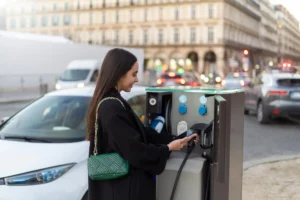
Home / EV Charging News / Electric Car Subsidies and Equity: Navigating Social and Economic Implications
As the world transitions towards sustainable transportation solutions, electric vehicles (EVs) have emerged as a promising avenue to reduce emissions and dependence on fossil fuels. Government subsidies play a significant role in promoting the adoption of EVs, aiming to accelerate the shift towards cleaner mobility. However, the allocation of subsidies raises questions about equity and the broader socio-economic impact. This article delves into the social and economic implications of electric car subsidies, examining their effects on promoting equitable access to sustainable transportation.
Electric car subsidies align with global environmental objectives by incentivizing the adoption of vehicles with lower carbon footprints. These subsidies also catalyze the EV market by reducing the upfront cost barrier, encouraging consumers to consider electric options.
While subsidies can accelerate EV adoption, they can inadvertently benefit wealthier households, deepening socio-economic disparities unless carefully designed. Additionally, urban areas often have better EV charging infrastructure, potentially excluding rural communities from subsidy benefits. Ensuring subsidies extend to the secondhand EV market can make sustainable transportation accessible to a broader range of buyers.
Widespread EV adoption through subsidies contributes to improved air quality and public health benefits in urban areas. Subsidies also stimulate the electric vehicle industry, driving technological innovation and fostering job opportunities.
To promote equitable access to sustainable transportation, governments must consider targeted approaches to electric car subsidies. These approaches might include:
As governments navigate the complexities of electric car subsidies, several strategies can be considered to promote equity:
The journey towards widespread electric vehicle adoption requires more than technological advancement—it demands an inclusive approach that considers the needs of all citizens. By navigating the delicate balance between environmental progress and socio-economic equity, governments can ensure that electric car subsidies become a driving force not only for cleaner air and reduced emissions but also for a more just and sustainable transportation landscape. As we traverse this road, guided by a commitment to equity, we can collectively steer towards a future where electric mobility benefits everyone, regardless of their socio-economic status.
Electric car subsidies represent a pivotal tool in steering society towards sustainable transportation. Yet, their effectiveness hinges on achieving an equilibrium between environmental goals and socio-economic equity. As governments worldwide continue to encourage EV adoption through subsidies, a careful balance must be struck to ensure that the benefits of clean mobility reach all corners of society. By implementing targeted approaches and innovative policies, we can accelerate the transition to electric vehicles while forging a path toward an equitable and sustainable future.
